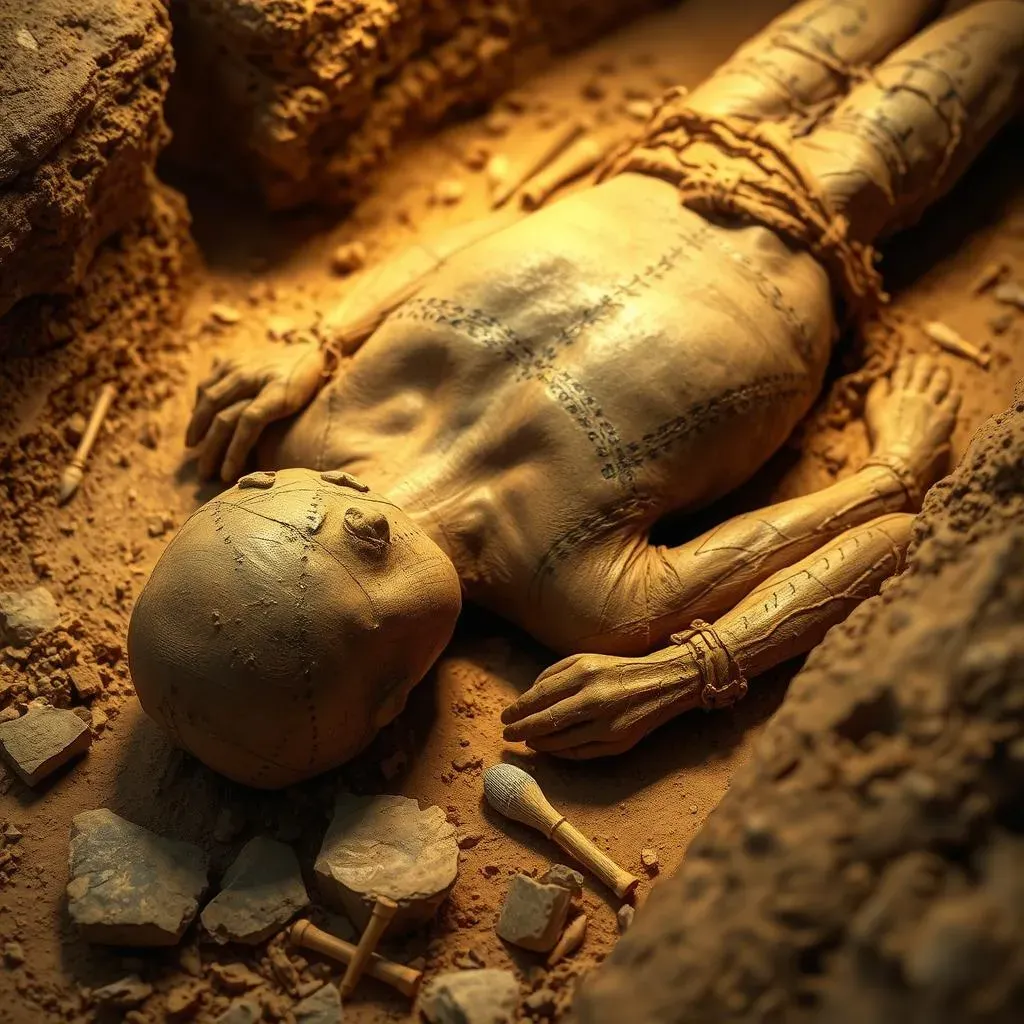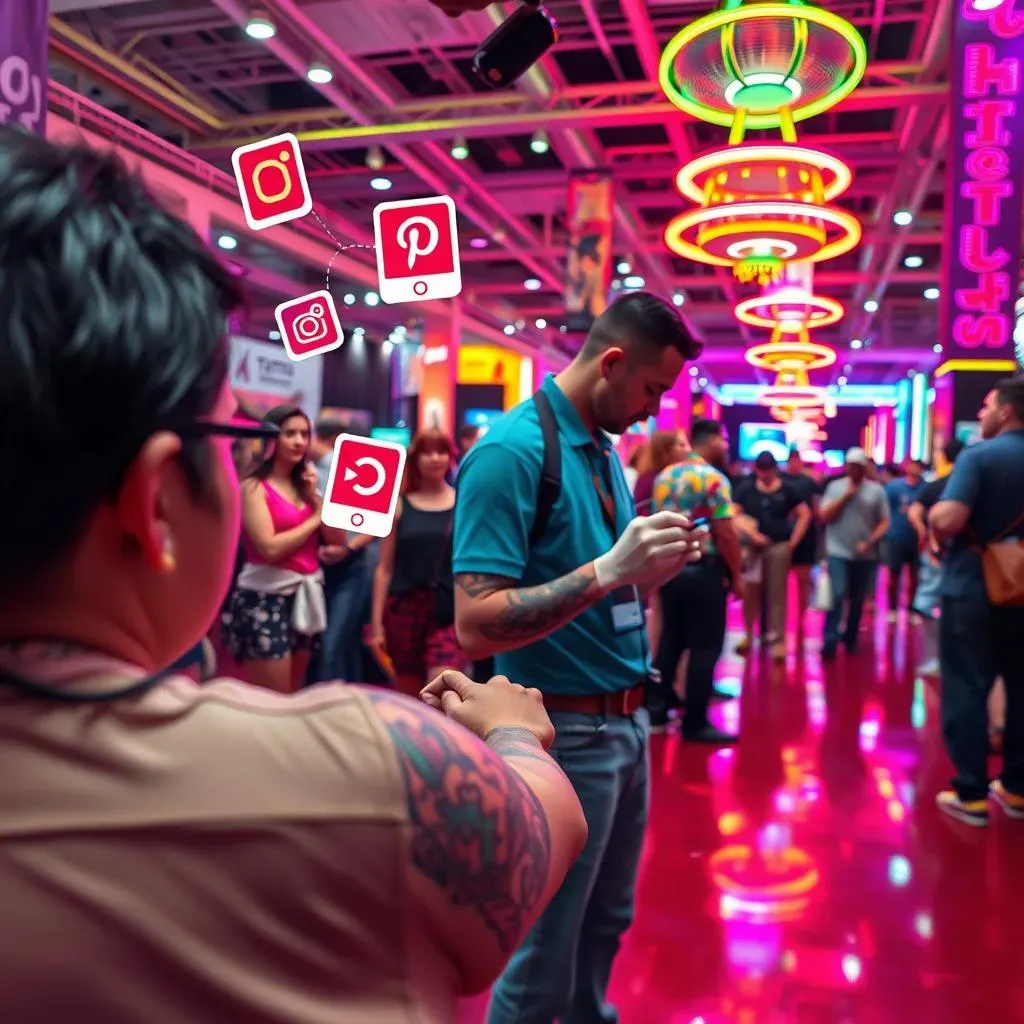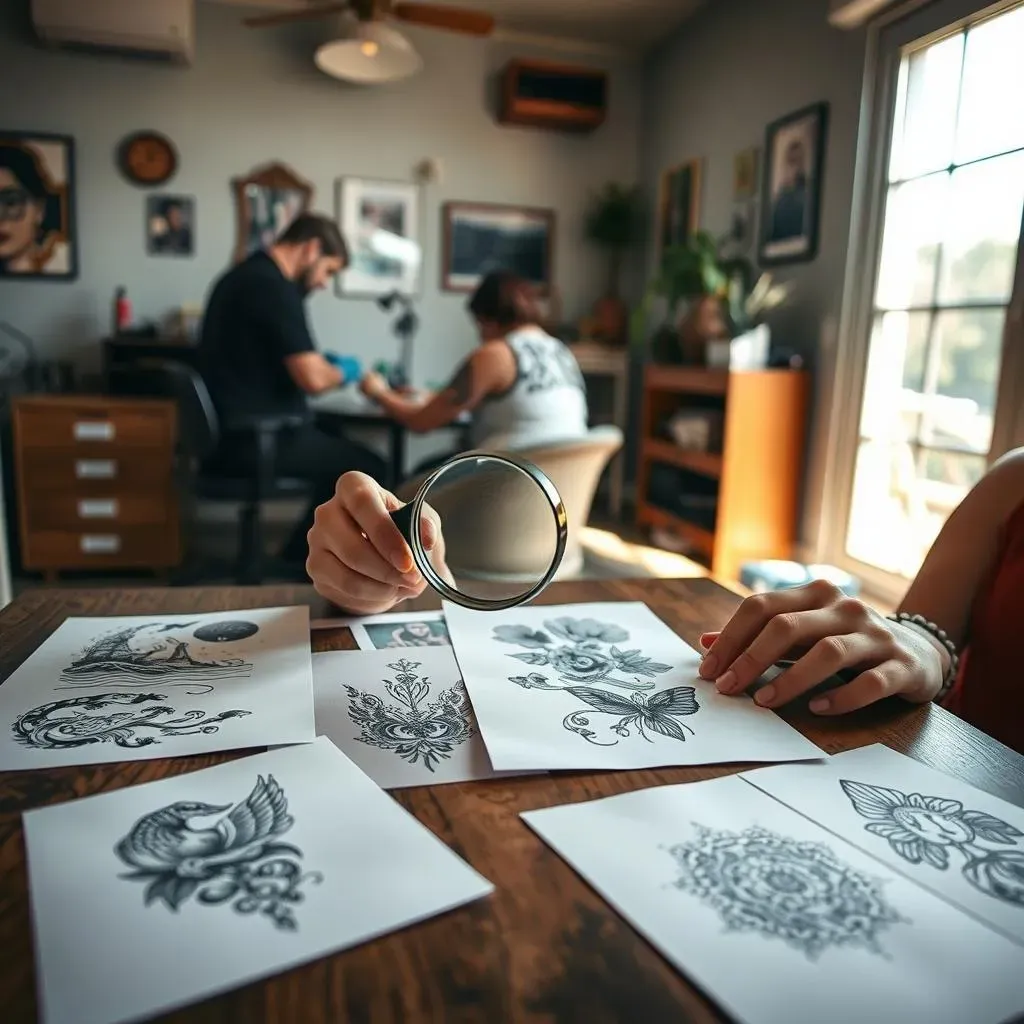Table of Contents
Tattoos, once relegated to the fringes of society, have exploded into mainstream culture. Ever wondered when tattoos become popular? This question sparks a fascinating journey through history, cultural shifts, and artistic evolution. From ancient rituals to modern self-expression, tattoos have traversed a long and winding road. This article peels back the layers of ink and time to reveal the key moments and influences that propelled tattoos from taboo to trendy. We'll explore the ancient origins of tattooing, examining its role in various cultures throughout history. Then, we'll dive into the periods when tattoos carried a heavy stigma, often associated with outlaws and societal outcasts. But the story doesn't end there. We'll trace the resurgence of tattoos in popular culture, spotlighting the celebrities, athletes, and artists who helped redefine perceptions. Finally, we'll offer some food for thought for anyone considering joining the ever-growing ranks of the inked. So, get ready to explore the captivating story of when tattoos become popular and how they've transformed into the ultimate form of personal expression.
The Ancient Roots of Tattoos: A Historical Overview
The Ancient Roots of Tattoos: A Historical Overview
Traces in Time: Early Tattoo Evidence
Believe it or not, the story of tattoos stretches back millennia. We're talking ancient history here! The earliest known evidence of tattoos comes from Ötzi the Iceman, a well-preserved mummy discovered in the Alps, dating back to around 3300 BCE. Ötzi sported around 61 tattoos, primarily simple lines and dots, likely created for therapeutic purposes, like pain relief. But Ötzi isn't alone. Archaeological finds across the globe, from Siberia to Egypt, reveal tattooed human remains from various ancient cultures. These weren't just random doodles; they were deliberate markings with deep cultural significance.
These ancient tattoos served a multitude of purposes. They could signify social status, religious affiliation, tribal identity, or even magical protection. Imagine being able to read someone's life story just by looking at their skin! The tools and techniques used to create these tattoos were as diverse as the cultures themselves. From sharpened stones and thorns to bone needles and natural pigments, early tattoo artists were incredibly resourceful and skilled. Each culture had its own unique style and symbolism, making the world of ancient tattoos a rich tapestry of human expression.
Cultural Significance: Tattoos Across Civilizations
Delving deeper, you'll find that tattoos held different meanings across different ancient civilizations. In ancient Egypt, tattoos were primarily associated with women and often linked to fertility and protection during childbirth. The ancient Greeks and Romans, on the other hand, often used tattoos to mark criminals and slaves, a stark contrast to their use in other cultures. But it wasn't all negative. The Thracians, for example, adorned themselves with tattoos to signify nobility and bravery.
Moving eastward, tattoos played a crucial role in many indigenous cultures. Polynesian cultures, in particular, developed incredibly intricate and elaborate tattoo traditions. Tattooing was a sacred art form, performed by skilled practitioners using traditional tools and techniques. These tattoos often represented lineage, status, and achievements, serving as a visual record of an individual's life journey. The word "tattoo" itself is believed to have originated from the Polynesian word "tatau," highlighting the profound influence of Polynesian culture on the global history of tattooing. It's amazing to think about how these ancient practices have shaped the modern tattoo landscape!
From Stigma to Style: The Journey of Tattoo Acceptance
From Stigma to Style: The Journey of Tattoo Acceptance
The Dark Ages of Ink: Tattoo Taboos Emerge
For a good chunk of history, tattoos weren't exactly seen as high art. In the Western world, particularly, tattoos became associated with groups on the fringes of society. Think sailors, circus performers, and, yes, criminals. These associations fueled a negative perception, casting tattoos as symbols of rebellion, deviance, and a general disregard for societal norms. The clean-cut, buttoned-up world of the early 20th century simply didn't have room for visible ink. Tattoos were often hidden, whispered about, and definitely not something you'd show off to your grandma. This stigma was further compounded by concerns about hygiene and the spread of diseases, adding another layer of apprehension to the already murky waters of tattoo acceptance.
During this period, the visibility of tattooed individuals was often linked to specific subcultures or professions. Sailors, for example, used tattoos to commemorate their travels, mark significant events, or simply express their identity within the maritime community. These tattoos, while meaningful to the wearer, often reinforced the association of tattoos with a life outside the mainstream. Similarly, circus performers, with their heavily tattooed bodies, challenged conventional notions of beauty and respectability. These contrasting images contributed to the complex and often contradictory perception of tattoos in popular culture.
World War II and Beyond: Shifting Sands of Perception
World War II played a surprising role in the evolving perception of tattoos. While tattoos were still largely stigmatized, they became increasingly common among soldiers, who used them to express patriotism, commemorate fallen comrades, or simply mark their time in service. These tattoos, often simple and straightforward, represented a sense of camaraderie and shared experience. However, the association of tattoos with military service also brought them into closer contact with mainstream society, gradually chipping away at the existing prejudices.
The post-war era saw a slow but steady shift in attitudes towards tattoos. As societal norms began to loosen, and individuality became more valued, tattoos started to shed some of their negative connotations. The rise of biker culture and rock and roll further contributed to this transformation, with tattoos becoming symbols of rebellion and nonconformity. While tattoos were still far from universally accepted, these cultural shifts paved the way for a more open and tolerant attitude in the decades to come. It was a gradual process, but the seeds of change had been sown.
Era | Dominant Perception of Tattoos | Associated Groups |
|---|---|---|
Early 20th Century | Stigmatized, associated with deviance | Sailors, criminals, circus performers |
World War II | Increasingly common among soldiers, mixed perceptions | Military personnel |
Post-War Era | Slow shift towards acceptance, linked to rebellion | Bikers, rock and roll musicians |
Tattoo Artists as Advocates: Redefining the Craft
The resurgence of tattoos wouldn't have been possible without the dedication and artistry of tattoo artists themselves. These individuals, often working in the face of societal disapproval, played a crucial role in professionalizing the industry and advocating for safety and hygiene. They elevated tattooing from a back-alley practice to a legitimate art form, attracting a new clientele and challenging existing stereotypes. Tattoo artists became ambassadors for the art, educating the public about the history, techniques, and cultural significance of tattooing.
Moreover, these artists pushed the boundaries of creativity, experimenting with new styles, techniques, and technologies. They embraced diverse influences, from traditional Japanese tattooing to contemporary fine art, creating a vibrant and dynamic tattoo landscape. By showcasing the artistic potential of tattoos, they helped to dismantle the outdated notion that tattoos were simply crude or rebellious markings. The transformation was remarkable, as tattoos evolved from symbols of stigma to badges of honor and works of art.
Celebrity Ink: How Pop Culture Made Tattoos Popular
Celebrity Ink: How Pop Culture Made Tattoos Popular
Let's be real, when tattoos become popular, celebrities played a HUGE role. The rise of rock and roll in the mid-20th century was just the beginning. Suddenly, musicians like Janis Joplin and the Rolling Stones were sporting visible ink, challenging the status quo and inspiring a generation to embrace individuality. But it wasn't just musicians. Athletes, actors, and other public figures began to embrace tattoos, transforming them from symbols of rebellion to badges of cool. Think about it: seeing your favorite celebrity rocking a killer tattoo made it seem a whole lot more acceptable, even desirable. The media attention surrounding these tattooed icons further amplified the trend, catapulting tattoos into the mainstream spotlight.
The influence of celebrity tattoos extended beyond mere visibility. Celebrities often used their tattoos to express personal beliefs, commemorate important events, or simply showcase their artistic tastes. This added another layer of meaning to the art form, transforming tattoos from simple decorations into powerful statements of identity. The media, of course, lapped it up, dissecting every design, analyzing every symbol, and fueling the public's fascination with celebrity ink. It was a perfect storm of celebrity influence, media attention, and a growing desire for self-expression, all contributing to the tattoo boom we see today.
Tattoo Renaissance: The Rise of Modern Tattoo Culture
Tattoo Renaissance: The Rise of Modern Tattoo Culture
The Digital Age of Ink: Social Media and Tattoo Culture
Fast forward to today, and we're living in a full-blown tattoo renaissance! Social media has completely transformed the tattoo landscape. Platforms like Instagram and Pinterest have become virtual galleries, showcasing the incredible talent of tattoo artists from around the globe. Aspiring tattoo enthusiasts can now easily discover new styles, find inspiration, and connect with artists whose work resonates with them. The democratization of information has empowered both artists and clients, fostering a more collaborative and informed approach to tattooing. The result? A vibrant and diverse tattoo culture that's constantly evolving and pushing boundaries. It's a far cry from the days of hushed whispers and hidden ink!
The rise of tattoo conventions and reality TV shows has further contributed to the mainstream acceptance of tattoos. These events provide a platform for tattoo artists to showcase their skills, network with peers, and educate the public about the art form. Reality TV shows, while sometimes sensationalized, have offered a glimpse into the world of tattooing, demystifying the process and highlighting the passion and dedication of the artists involved. This increased visibility has helped to break down lingering stereotypes and normalize tattoos as a form of self-expression. In today's world, tattoos are not just accepted; they're celebrated.
The modern tattoo culture is also characterized by a growing appreciation for diverse styles and techniques. From traditional Japanese tattooing to hyper-realistic portraits, the range of artistic possibilities is virtually limitless. Clients are increasingly seeking out artists who specialize in specific styles, reflecting a desire for unique and personalized tattoos. This has led to a flourishing of niche tattoo studios and a greater emphasis on artistic collaboration. The result is a tattoo landscape that's as diverse and dynamic as the individuals who choose to get inked.
Navigating Tattoo Trends: What to Consider Before Getting Inked
Navigating Tattoo Trends: What to Consider Before Getting Inked
Think Before You Ink: Choosing the Right Design
so you're ready to get inked! Awesome! But hold up a sec. Before you dive headfirst into the world of tattoo trends, let's talk strategy. First and foremost, think long and hard about the design itself. Is it something you'll still love in 10, 20, or even 50 years? Trends come and go, but tattoos are (usually) forever. Avoid fleeting fads and opt for something that resonates with your personal values, interests, or experiences. A meaningful symbol, a favorite quote, or a representation of a cherished memory are all great starting points. Trust me, you don't want to be stuck with a tribal armband you regret in your 40s!
Consider the style of the tattoo as well. Are you drawn to bold, traditional designs, delicate watercolor effects, or intricate geometric patterns? Research different styles and find an artist who specializes in the one you're after. Don't be afraid to ask for custom designs or modifications to existing ones. Remember, this is your body, your story, and your ink. Make sure it reflects your unique personality and artistic vision. And for goodness sake, spellcheck everything! A misspelled tattoo is a permanent reminder of a temporary lapse in judgment.
Location, Location, Location: Placement Matters
Alright, you've got your design nailed down. Now, let's talk placement. Where you put your tattoo can be just as important as what you get. Consider your lifestyle, your profession, and your personal preferences. A full back piece might be awesome, but it might not be the best choice if you work in a conservative office environment. Similarly, a tattoo on your hands or neck will be highly visible, which can be a plus or a minus depending on your personality and social circle. Think about the size and shape of the design as well. A small, delicate tattoo might get lost on a large expanse of skin, while a large, intricate design might look cramped in a small area.
Pain tolerance is another factor to consider when choosing a tattoo placement. Some areas of the body, like the ribs, feet, and hands, are notoriously sensitive, while others, like the outer thigh and upper arm, are generally less painful. If you're a first-timer, you might want to start with a less sensitive area and work your way up. Ultimately, the best tattoo placement is the one that makes you feel confident, comfortable, and happy. But it never hurts to do your research and weigh the pros and cons before making a final decision.
Shop Smart, Tattoo Safe: Finding the Right Artist
This is perhaps the most crucial step in the entire process: finding the right tattoo artist. Do your homework! Don't just walk into the first shop you see and hope for the best. Research local artists, check out their portfolios, and read reviews from previous clients. Look for an artist whose style aligns with your artistic vision and whose work is consistently high-quality. Pay attention to the cleanliness and professionalism of the studio as well. A reputable tattoo shop will adhere to strict hygiene standards and use sterilized equipment to prevent the spread of infections.
Don't be afraid to ask questions! A good tattoo artist will be happy to discuss your design ideas, answer your concerns, and provide guidance on placement, size, and style. They should also be upfront about pricing and aftercare instructions. Trust your gut! If something feels off, don't hesitate to walk away and find another artist. Remember, you're entrusting this person with your body, so it's essential to feel comfortable and confident in their skills and professionalism. A little extra research can go a long way in ensuring a safe, positive, and ultimately satisfying tattoo experience.
Consideration | Description | Action |
|---|---|---|
Design | Meaningful, timeless, reflects personality | Avoid fleeting trends, spellcheck! |
Placement | Considers lifestyle, profession, pain tolerance | Research sensitive areas, visualize placement |
Artist | Reputable, skilled, hygienic studio | Check portfolio, read reviews, ask questions |
Final Thoughts: The Enduring Appeal of Ink
From ancient markings to modern masterpieces, tattoos have journeyed through time, shedding old stigmas and embracing new meanings. When tattoos become popular, it wasn't a single event but a gradual evolution fueled by cultural shifts, artistic innovation, and the courage of individuals to express themselves. Today, tattoos stand as a testament to the power of self-expression, individuality, and the enduring human desire to leave a mark on the world – and on ourselves. As trends continue to evolve, one thing remains clear: the story of tattoos is far from over, with each new design adding another chapter to this ever-evolving art form.